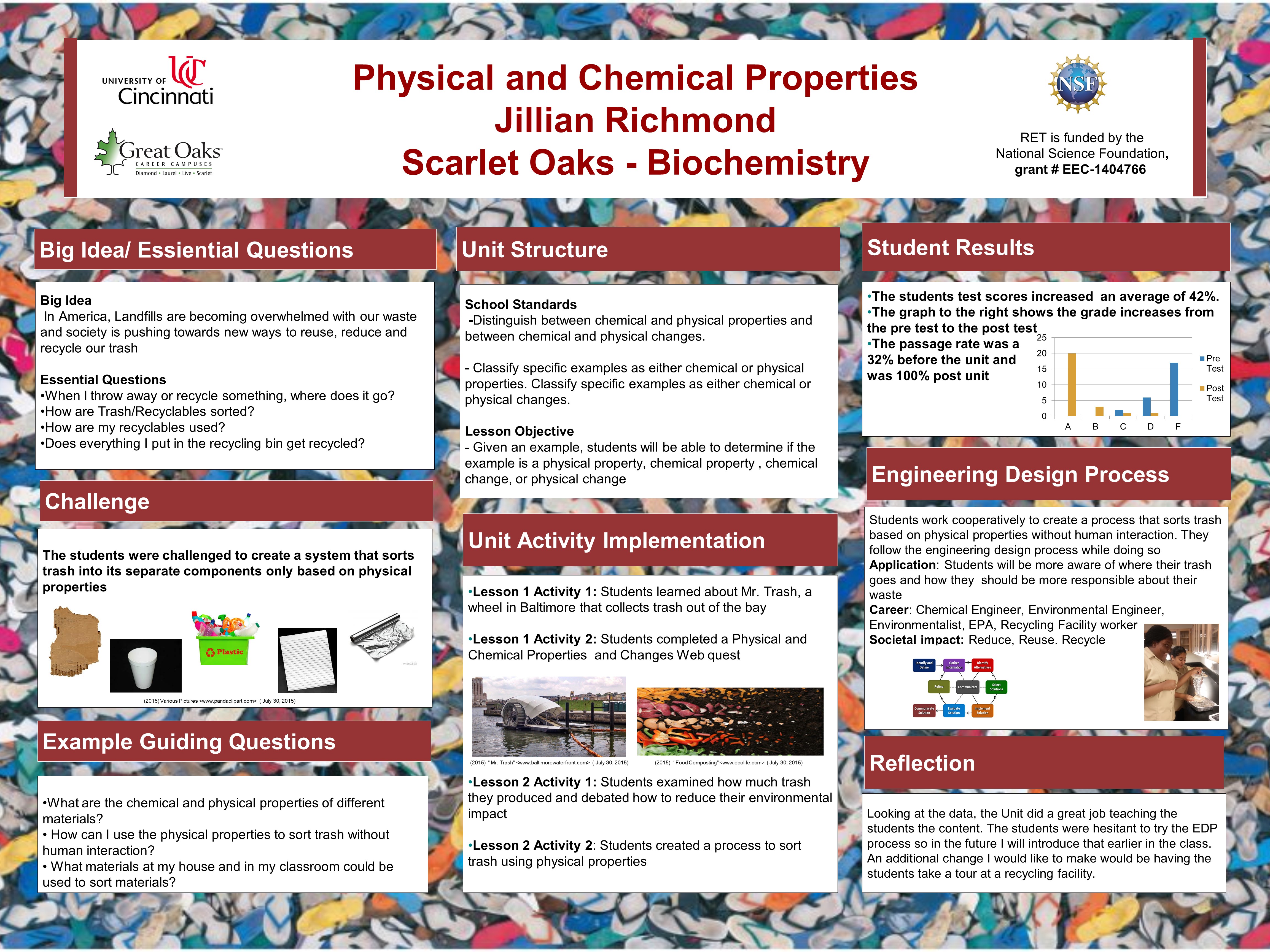Research Experience for Teachers (2015-2016)
Sorting Trash by Physical and Chemical Properties
 |
||||||
|
||||||
|
Pre/Post Test: Pre-Test Post-Test |
||||||
|
The Big Idea (including global relevance) In America, Landfills are becoming overwhelmed with our waste and society is pushing towards new ways to reuse, reduce and recycle our trash. In 2013 alone 167 million tons of trash were placed in landfills in America whereas 87 million tons of trash were recycled or composted. Most sorting facilities for trash and recyclables use physical and chemical properties to sort objects. |
|
Essential Questions How are Trash/Recyclables sorted? |
|
The Hook
Mr. Trash in Baltimore is a self-powered large apparatus that sits in the Baltimore Bay and gathers trash out of the water. This improves water quality and helps keep fish and other aquatic life from eating trash. Some cities are starting to implement similar systems due to the popularity and impact of Mr. Trash. Although this is a great, once the trash is collected it goes to a landfill. The students should see that taking trash out of a river and moving it to land isn’t the most efficient way to help our planet. |
|
The Challenge The students must create a process to sort 6 materials without hand sorting using their chemical and physical properties. They have 3 days to create and revise their process. The teams will consist of 3 members: A Speaker (the only member of the group who can ask the teacher questions), A Researcher (Who can look up the physical and chemical properties of the different materials), and A Recorder (Who will record the groups thought process and the processes that they come up with). |
|
Guiding Questions
|
ACS (Real world applications; career connections; societal impact)
Although it is not likely that the students will be creating this process in the real world, It is something that is done by engineers daily and may be used late in their life.
It is very important that students know where trash goes when they throw it away and how it could be reused, reduced, or recycled.
Mention of how an engineer would design this process in the real world.
Misconceptions
- The differences between Chemical and Physical properties and changes, Density vs. Mass.
Unit Lessons and Activities
- Lesson 1: Involves the students getting hooked into the unit and learning content. The students will learn about Mr. Trash and how trash is disposed of. Students will learn about physical and chemical properties and changes as well as the differences between mass, density and volume.
- Activity 1: Hook
- Activity 2: Web quest
- Lesson 2: Involves students looking at their own waste and creating a process to sort waste. The students will study how much trash they waste as well as what can be reduced, reused and recycled. Students will also be challenged to create a process to sort trash.
- Activity 3: Home study
- Activity 4: Challenge
Additional Resources
Aluminum, Foam, Paper, Cardboard, Plastic #1, Plastic #2, Various Classroom materials, Computers, PowerPoint, Worksheet 3, Worksheet 2.
